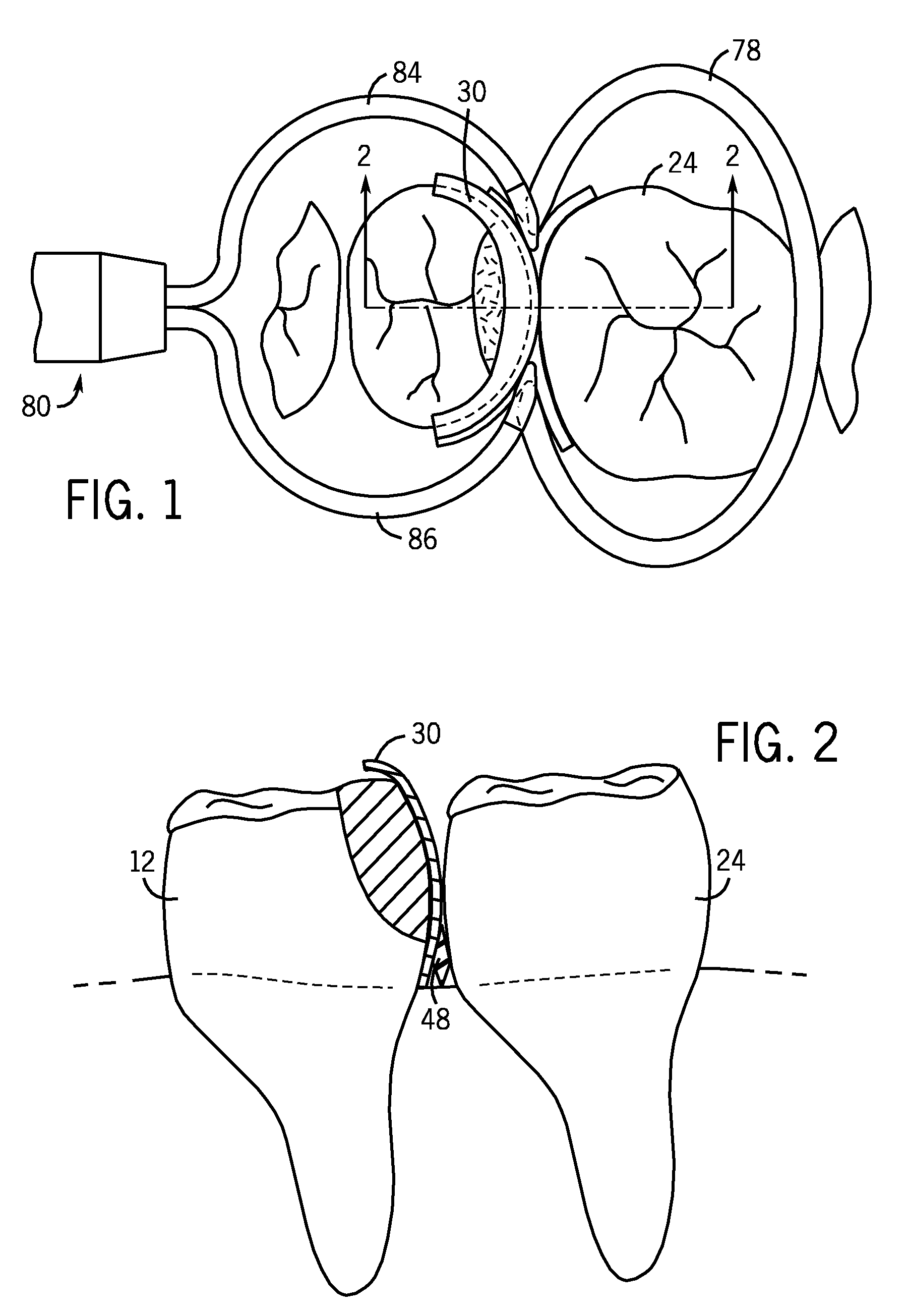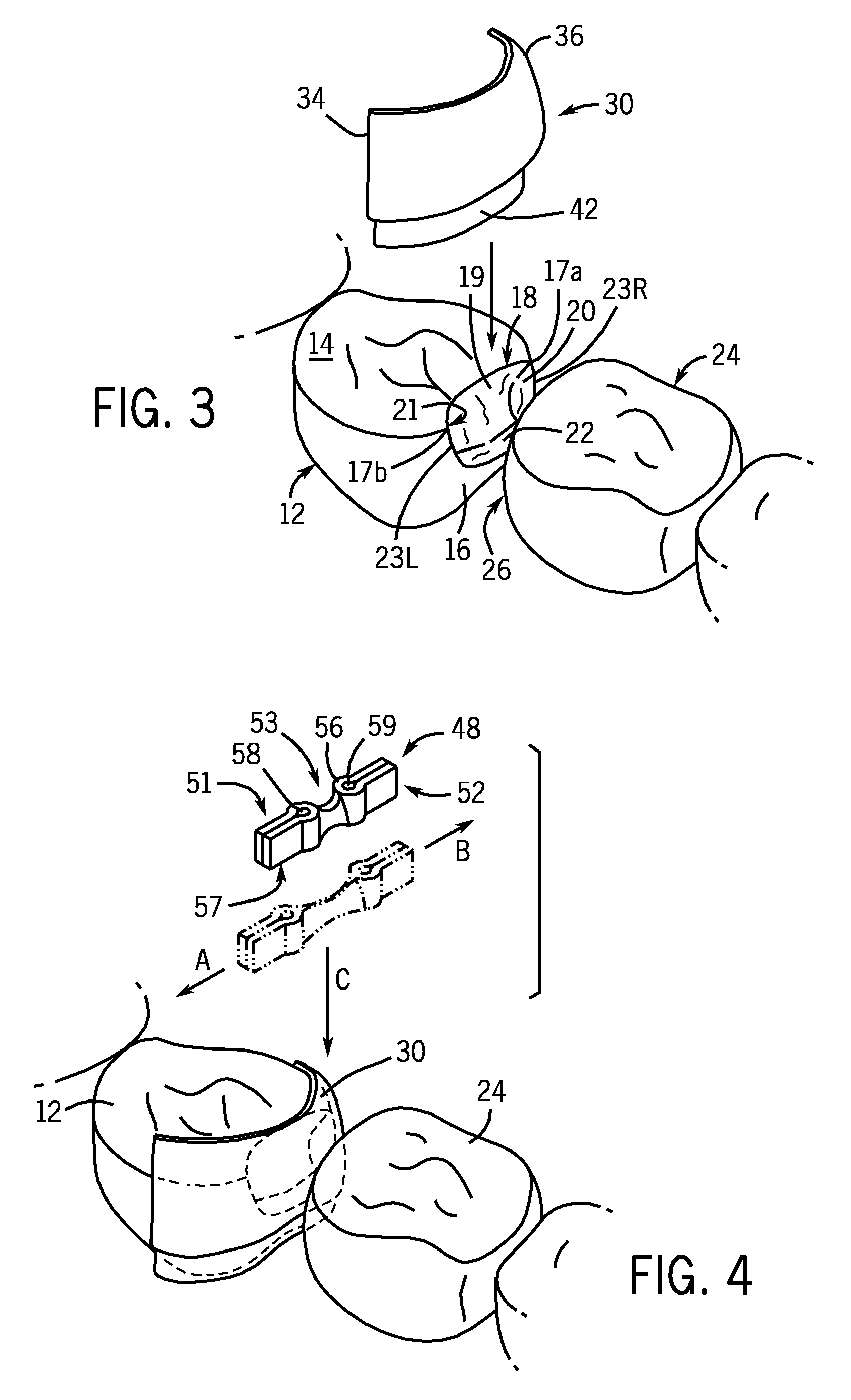Dental Matrix Devices And A Seamless, Single Load Cavity Preparation And Filling Technique
a single-load cavity and dental matrix technology, applied in the field of dental matrix devices and a single-load cavity preparation and filling technique, can solve the problem that the resin tooth bonding agent is not light-cured, and achieve the effect of fully anatomical sectional matrix and stabilizers, tighter contact, and improved vision
- Summary
- Abstract
- Description
- Claims
- Application Information
AI Technical Summary
Benefits of technology
Problems solved by technology
Method used
Image
Examples
Embodiment Construction
[0163]Turning to FIGS. 1-8, there is shown various steps and devices in an example method according to the invention for the restoration of a tooth. In a first step, the dentist locates a tooth having a cavity. Referring to FIG. 3, there is shown a tooth 12 having a top occlusal surface 14 and an interproximal side surface 16. A hollow cavity preparation 18 has been prepared in tooth 12. The hollow cavity preparation 18 includes an inner surface 19, a side surface 20, an opposite side surface 21 and a bottom surface 22. Using the well known classification system developed by Dr. G. V. Black in 1908, this would be a Class II cavity involving the interproximal side surface 16 and top occlusal surface 14 of tooth 12, which may be a premolar or molar.
[0164]The tools and techniques for removing a portion of the top surface 14 of the tooth 12 and a portion of the interproximal surface 16 of the tooth 12 to form the hollow cavity preparation 18 are well known in the art and therefore will ...
PUM
 Login to View More
Login to View More Abstract
Description
Claims
Application Information
 Login to View More
Login to View More - R&D
- Intellectual Property
- Life Sciences
- Materials
- Tech Scout
- Unparalleled Data Quality
- Higher Quality Content
- 60% Fewer Hallucinations
Browse by: Latest US Patents, China's latest patents, Technical Efficacy Thesaurus, Application Domain, Technology Topic, Popular Technical Reports.
© 2025 PatSnap. All rights reserved.Legal|Privacy policy|Modern Slavery Act Transparency Statement|Sitemap|About US| Contact US: help@patsnap.com



